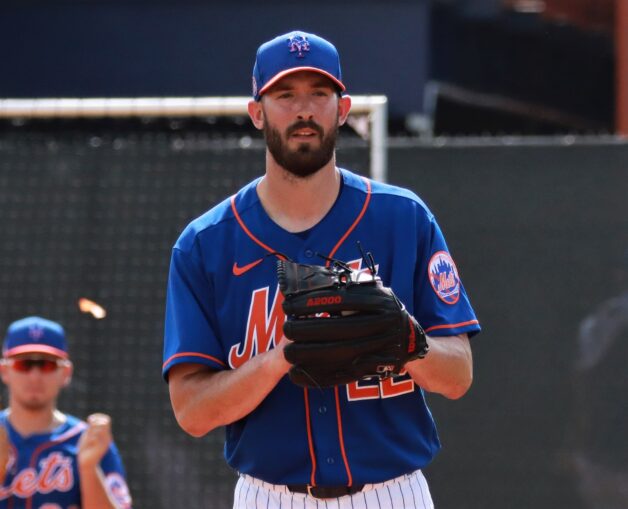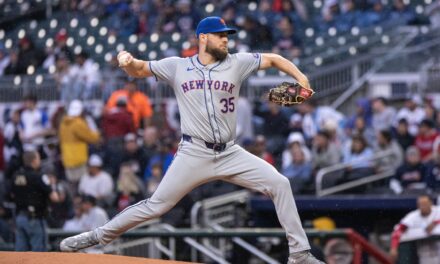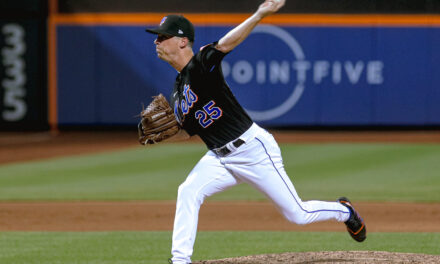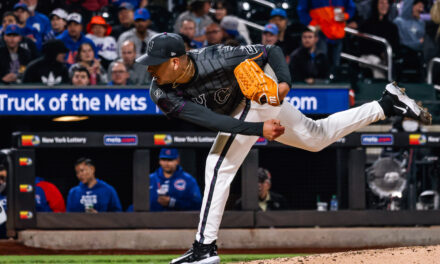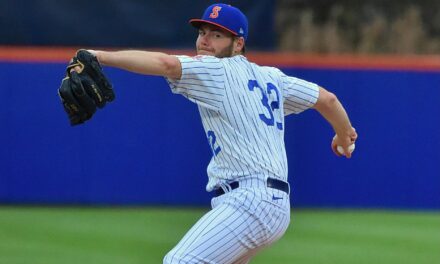
After Zack Wheeler‘s departure to the “City of Brotherly Love” this offseason, the Mets ventured into the free agency market to pick up a pair of veteran starters, Michael Wacha and Rick Porcello.
In Wacha, the Mets have themselves a project. Once considered an elite can’t-miss farmhand, Wacha’s prospect pedigree took a tumble about a half-decade ago.
He’s since struggled to regain effectiveness and was even being demoted to the Cardinals’ bullpen last season. Nevertheless, the Mets took a roll of the dice on him, believing his fastball/change-up combo was worth three million dollars.
Although he was originally placed in the pen, Noah Syndergaard‘s year-long absence from the rotation virtually guaranteed Wacha a starting spot.
The Mets’ other expenditure, Rick Porcello, has established himself as one of baseball’s more durable arms.
From 2016 to 2019, Porcello’s 792 innings placed him third among all pitchers. These frames might not have been at the level of pitchers like Justin Verlander and Zack Greinke, but they were still quality innings, dammit.
And considering the Mets’ pitching staff has never been trusted to stay healthy, a reliable pitcher that’s trusted to take the ball every fifth day could literally make-or-break their season.
Porcello has had his ups-and-downs through his career, with his 2016 Cy Young Award representing the pinnacle of his career. However, since winning the award, his fastball velocity has slowly decreased while his ERA has crept upwards.
It all came crashing down for the right-hander in 2019. Porcello posted career-high marks in hard-hit percentage, xSLG, and average launch angle, resulting in career-worsts in ERA, xERA, and xFIP.
Despite his struggles in 2019, I feel fairly confident in saying Porcello can rebound in 2020. Maybe not to his 2016 Cy Young levels, but I do think he’ll go back to being a league-average hurler.
The raw ingredients still are there. While there were many factors that played into his poor 2019 campaign, a couple of his metrics still boded well for his future. His minuscule walk rate still remained unchanged. There was no breakdown of command; his year-over-year strike percentage actually increased.
Another positive sign is Porcello’s success in The Shadow Zone in 2019.
The Shadow Zone is one of the four Attack Zones. It “shadows” the strike zone, making it the area where finesse pitchers like Porcello want to thrive in.
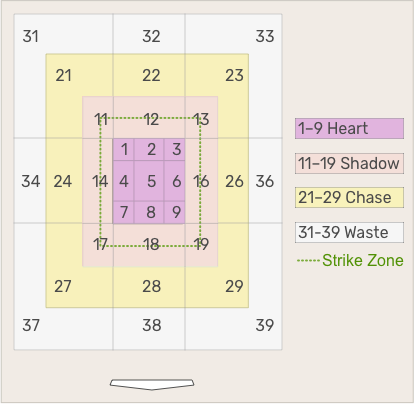
Fortunately, it looks like Porcello’s doing just that; the veteran righty posted a -19 Run Value in The Shadow Zone in 2019. Breaking it down by pitch characterization in The Shadow Zone, Porcello induced a -12 Run Value with his fastball and a -7 Run Value with his off-speed pitches.
Due to his declining velocity over the last few years, he’s evolved more into a finesse pitcher, aiming for the edge of the strike zone more. And he’s done well in that regard, recording an edge percentage that’s two percentage points above the league-average.
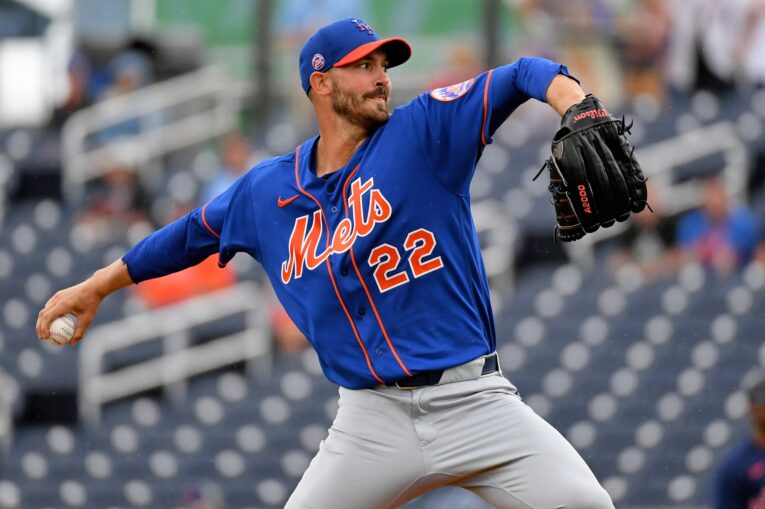
In Summer Camp 2.0, Porcello mentioned his intention to pitch higher in the strike zone with his four-seam fastball.
This unheralded change in pitch location might be a move that pays off major dividends for both the Mets and Porcello.
We’ve already seen Jeremy Hefner work wonders. Edwin Diaz and Jeurys Familia already look eons better than they did last season.
Hefner also modified Steven Matz‘s delivery, helping him gain a couple of mphs on his fastball. Under Hefner’s tutelage, Matz has also been tinkering with his curveball grip to make it more effective. We saw how that paid off in Saturday’s contest.
Regarding Porcello, Hefner already has some promising traits to work with. Despite diminished velocity (his fastball velo only ranked in the 15th percentile in 2019), Porcello’s Bauer Units rank among baseball’s best.
Bauer Units aren’t a metric that’s results-based; it’s utilized to delve into a pitcher’s pitch design.
Bauer Units are calculated by dividing a pitcher’s spin rate by his velocity. This metric, derived by Driveline’s Kyle Boddy, helps isolate the spin of the pitch, while taking into account the velocity. That’s a pretty complex definition so I’ll break it down in layman’s terms.
Bauer Units= Spin Rate/Velocity
But how important is a certain spin rate at a certain velocity? That’s the question Bauer Units tries to answer.
There’s data conducted by Boddy and his crew that confirms a fastball’s spin rate and its velocity are directly correlated. Using this conclusion, we’re able to garner that a fastball with a high spin rate, but a low velocity, is more impressive than one with a high spin rate and a high velocity.
Using this assumption, we’re now able to glean the best way for a pitcher to attack an opposing batter. If a pitcher’s Bauer Units on his fastball is high, then he should locate higher in the zone, as his spin rate will allow the pitch to play up better. If his Bauer Units on his fastball are low, then he should locate it in the lower third of the plate.
In regards to Rick Porcello, his Bauer Units on his four-seam fastball ranks as the 15th highest in the majors. This suggests that his four-seamer plays up better in the zone. His sinker also features predominantly on the leaderboard, placing him 16th.
It’s also worth noting that four of Porcello’s pitches (four-seam fastball, sinker, slider, and curveball) all rank highly in Bauer Units. Of course, there isn’t any correlation between off-speed pitches with higher Bauer Units and better production, but it’s an interesting observation.
For those who are interested, here’s a Google Sheet with the league-wide Bauer Unit calculations from 2019 (Porcello is highlighted in blue).
A high-spin fastball that plays up in the zone should help Porcello’s pitch design, and thus his results. Coupled with the possibility that Hefner might help him regain some of the vertical movement he traded in for horizontal movement in 2019, his four-seamer has a chance to be a real weapon in 2020.
If he can re-establish his fastball, he could find better results with some of his other off-speed pitches, such as his slider.
It’s worth keeping an eye on that slider. In Sunday’s exhibition game against the Yankees, Porcello featured the pitch 40% of the time, locating it well to the outside corner. In his postgame interview, Porcello noted that an effective slider is the key to having a successful 2020 campaign.
Rick Porcello threw his slider 40% of the time last night, a mark he topped in only one game last season. #Mets
"That's a pitch that I need," he said after the game.
The only real mistake was the homer to Clint Frazier. pic.twitter.com/iRpyZEC0Nm
— Jacob Resnick (@Jacob_Resnick) July 19, 2020
In 2019, his slider was his most effective off-speed delivery last season, by the measure of xwOBA. It’s anyone’s guess as to how it will play in 2020, but considering its results in the recent exhibition game, there’s some potential.
The slider doesn’t have much going for it, but Hefner’s worked magic in the past in his previous post as the assistant pitching coach with the Twins. Combine that with the fact the Mets have a history of helping their pitchers with their sliders and there’s a chance the Mets can help Porcello with his slider woes from a year ago.
Besides, I’ll stan any pitch that can induce ugly swings like this.
Rick Porcello strikes out Clint Frazier (slider) pic.twitter.com/mBL7ixxsQS
— David Adler (@_dadler) July 18, 2020
It’d be foolhardy to expect anything resembling ace-like production, but even if Porcello can give 65+ innings of league-average ball, it’ll make his one-year pact worth it.
With Marcus Stroman indefinitely out, Porcello is suddenly the No. 3 pitcher on a team with postseason aspirations. While his numbers from a year ago might stress the average fan, I believe Porcello is a couple of fixes away from doing what he does best: taking the ball every fifth day and giving his team a chance to win.
Previous iterations in this series:


